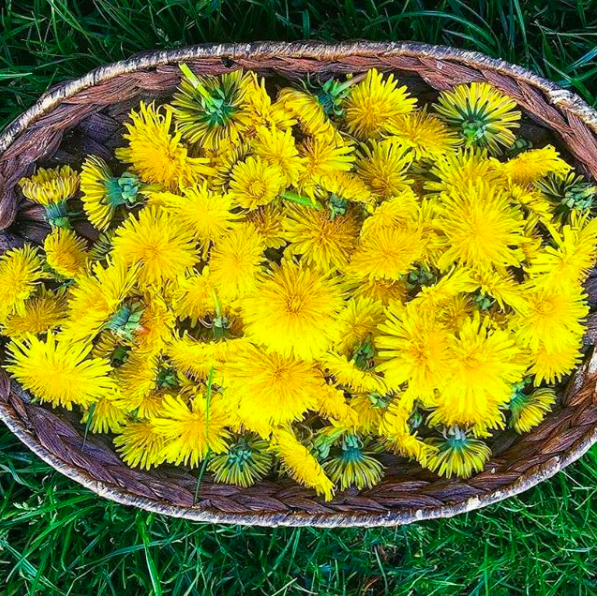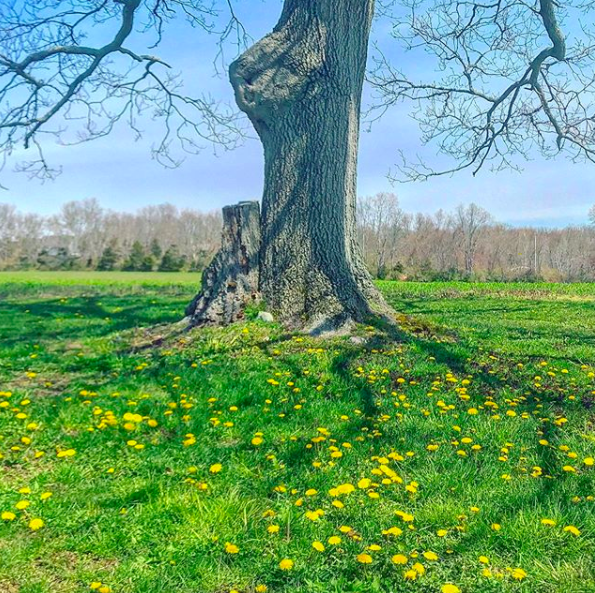MAY – DANDELION

If the poet Mary Howitt said, “happy are they who hath the power to gather wisdom from a flower,” then I might add, “and healthy are they who hath the wisdom to gather power from a flower!” Especially, that is, if we’re talking about a certain wild and infamous flower: the Dandelion.
Love them or hate them, Dandelions aren’t going anywhere. These plants came to us all the way from Eurasia, traveling partners of long ago European settlers. I like to think the etymology of their name, ‘dent de lion’ or ‘tooth of a lion’, not only refers to the toothed edges of their leaves, but also to their resilience and strength. Powerful indeed are these prolific patches of sunshine. From backyards and sidewalks to garden beds and land trusts, we all are intimately aware of just how pervasive and near-impossible to eradicate this weed is. But, what is a weed but a plant whose virtues have yet to be discovered?
Lucky for us, their power doesn’t only reside in their tenacity, but also in their composition — the Dandelion is a veritable nutrient powerhouse. Heck, you might even call them a superfood for just how nutritious they are. That’s right, the Dandelion has far more virtues than the petulant lawn-guardians will have you believe!

So let’s get to it. What’s so special about Dandelions?
- Their leaves are chock full of Vitamins A, B complex & C, as well as Iron, Calcium, Potassium & Zinc
- Their slightly bitter flavor stimulates digestion and liver function, important facets of detoxification
- The bright yellow flowers are a rich source of antioxidants
- Their roots are pre-biotic and mildly diuretic, easing water retention and aiding kidney function
The strength of Dandelion then just might be hinting to the strength these resilient weeds can build within us, should we choose to see them as friend, not foe!

Now to absorb the virtues and delights of our friend the Dandelion, here are a few simple recipes to get you started:
In the springtime, when our bodies are craving fresh greens and digestive support, you simply can’t have enough Dandelion! Enjoying your Dandelion in a variety of ways will guarantee you enjoy the many health benefits and flavors of this wonderful weed.
As with any wild edibles, make sure that you only foraging in places that are free from pesticides and away from the road. While this is less of a concern with the prolific Dandelion, it’s also important to remember when foraging to never take the first or last plant you see, never take more than half that you find, and always properly identify before consuming. This ensures not only your personal health but the health of our ecosystems — that includes the bees and other humans that love these plants, too.

Happy spring & happy foraging, friends!

Carissa Wills-Demello
Author
Carissa is Westport native, a practicing herbalist, a lover of wild plants, and owner of BIlo Herbs. You can enjoy Dandelion and other nutritious weeds in her herbal tea blends, syrups, and vinegars! (Check out www.BiloHerbs.com)

